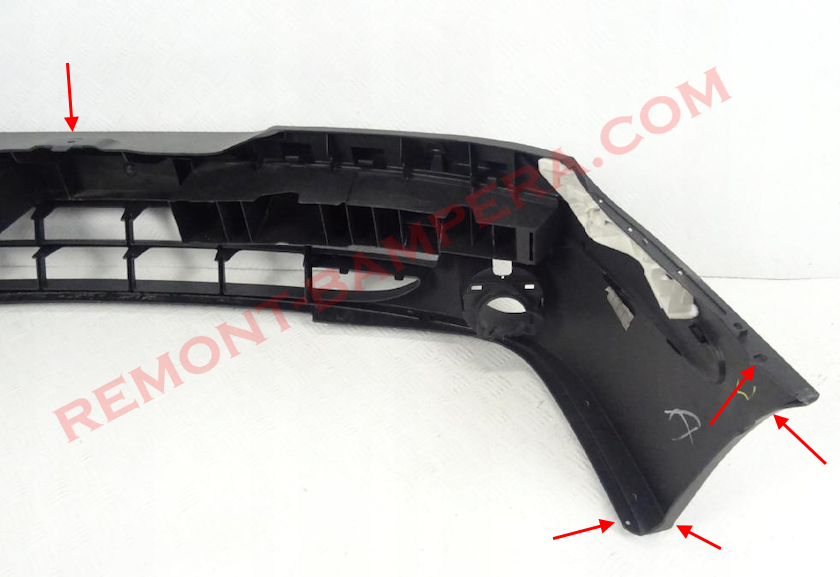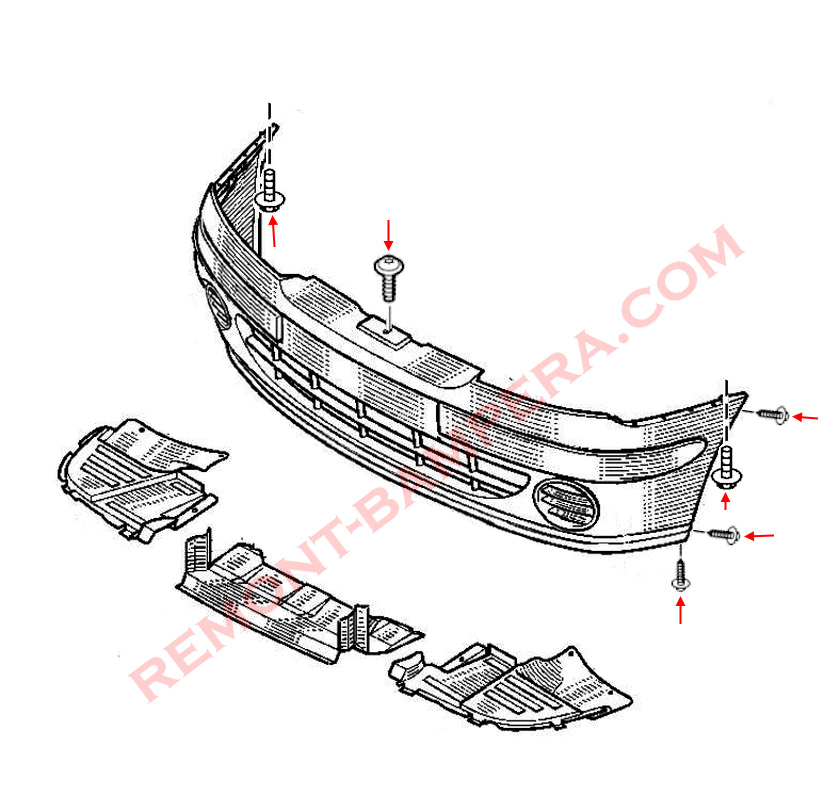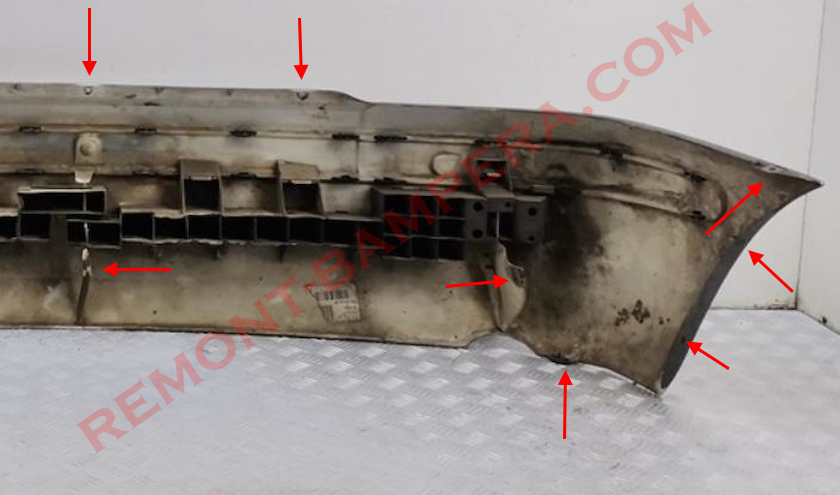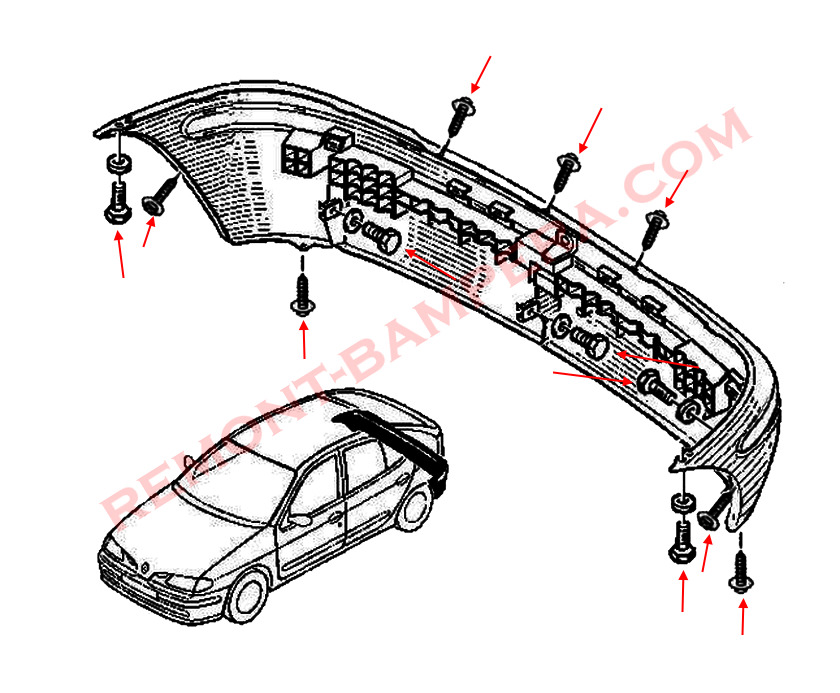Production Years and Facelift
The first generation of the Renault Mégane debuted in 1995, replacing the popular but outdated Renault 19. Production continued until 2002, after which the car was succeeded by the Mégane II. In 1999, the model underwent a facelift that affected its exterior design, interior, and technical specifications.
Body Styles and Model Codes
The Mégane I was available in several body styles:
- Hatchback (3 and 5-door) – Body code RA0/1 (pre-facelift), RA2/3 (post-facelift).
- Sedan (Classic) – Code RA4.
- Estate (Wagon) – Code RA5/6.
- Convertible (Coupé-Cabriolet) – Code RA7, introduced after the facelift.
Design and Features
Before the facelift, the Mégane I had rounded shapes typical of the 1990s, with headlights integrated into the body. After the 1999 update, the radiator grille, bumpers, and taillights were redesigned, while the interior received more modern materials and a new dashboard.
The convertible (with a retractable hardtop) was developed in collaboration with Karmann and became one of the first mass-produced European convertibles of its kind.
Bumper Plastic Markings >P/E<
Depending on the production year and body type, the bumper mounting points may vary slightly.
How to Remove the Front Bumper
- Lift the hood.
- Near the hood latch, unscrew the bolt that secures the top part of the front bumper (inserted from top to bottom).
- In the wheel arches, remove two (or three) screws on each side and detach the fender liners from the bumper.
- Move the fender liners aside and unscrew one bolt on each side (inserted from bottom to top) securing the bumper corners to the fenders.
- From underneath, release the clips holding the lower part of the bumper to the underbody panel.
- Pull the bumper forward and disconnect the wiring for the fog lights.


How to Remove the Rear Bumper
- Open the trunk lid and unscrew three bolts in the opening that secure the top part of the rear bumper.
- Move to the lower part: unscrew three bolts on the backside of the bumper.
- Remove the screws in the wheel arches and underbody that secure the fender liners to the bumper.
- Unscrew one bolt on each side (inserted from bottom to top) securing the bumper corners to the fenders.
- Pull the bumper backward to remove it.


Technical Specifications
The car was offered with gasoline and diesel engines:
- Gasoline: 1.4 (75 hp), 1.6 (90 hp), 2.0 (115–140 hp), and a turbocharged 1.8 (150 hp) in the RS (sport) version.
- Diesel: 1.9 D (65 hp) and 1.9 dTi (80 hp).
Transmission options included a 5-speed manual or a 4-speed automatic. The suspension was typical for its class: MacPherson struts at the front and a torsion beam at the rear.
Interesting Facts
- The first Mégane RS – the Mégane Coupe 2.0 16V (140 hp) – laid the foundation for future Renault sport models.
- Safety – After the facelift, the car received improved passive safety, including side airbags.
- Convertible Innovation – The Mégane Coupé-Cabriolet (2001) featured a metal roof, which was rare at the time.
- Design Experiments – The Mégane Fiftie concept (1996) was inspired by the classic Renault 5 but never entered production.
Advantages of the Model
- Reliability – The simple engines (especially the 1.6 and 2.0) were known for their durability.
- Comfort – The suspension handled rough roads well.
- Body Variety – Ranging from practical estates to stylish convertibles.
- Affordable Parts – Due to high production volumes, repairs were inexpensive.
Disadvantages
- Rust Issues – Weak spots included the sills, wheel arches, and underbody.
- Interior Quality – Cheap plastics and squeaks after a few years of use.
- Diesel Engines – The 1.9 D and dTi were noisy and lacked performance.
- Automatic Transmission – The 4-speed gearbox was outdated even by late 1990s standards.
Conclusion
The Renault Mégane I is a typical representative of the European compact class of the 1990s. It wasn’t revolutionary but offered a balanced mix of practicality, decent performance, and affordability. After the facelift, the model became more modern, but by the early 2000s, it was already losing ground to newer competitors.

 English
English  Italiano
Italiano  Français
Français  русский
русский  Deutsch
Deutsch  Español
Español